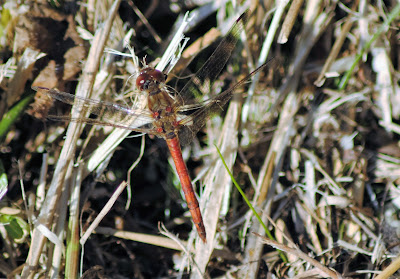This blog may help people explore some of the 'hidden' issues involved in certain media treatments of environmental and scientific issues. Using personal digital images, it's also intended to emphasise seasonal (and other) changes in natural history of the Swansea (South Wales) area. The material should help participants in field-based modules and people generally interested in the natural world. The views are wholly those of the author.
Sunday, 2 October 2022
Seeing the Changes 1710
More late flowers and critters on my route from Loughor to Penclacwdd via Bynea. In addition to flowers noted yesterday, spotted Great mullein (Verbascum thapsis); Common toadflax (Linaria vulgaris); Common field speedwell (Veronica persica); Sea Mayweed (Matricaria maritima); Common evening primrose (Oenothera biennis); Greater celendine (Chelidonium majus); Hoary cinquefoil (Potentilla argentea); Water mint (Mentha aquatica); Ox-eye daisy (Leucanthemum vulgare); Common mallow (Malva sylvestris) and Ramping fumitory (Fumaria capreolata). Bittersweet (Solanum dulcamara) was in berry. Several Common darters (Sympetrum striolatum) were flying. Still some Speckled wood (Parage aegeria tircis) and Small white (Artogeia rapae) butterflies about.
Subscribe to:
Post Comments (Atom)
-
I n the UK and US, a pparently popular and successful vegan/vegetarian restaurants are reportedly closing or adding meat to their menus ( ...
-
Early ripening fruit may seem convenient but some folk think it confirms environmental stress. There's also a possibility th...
















%20mating%20NWCW.jpg)


No comments:
Post a Comment